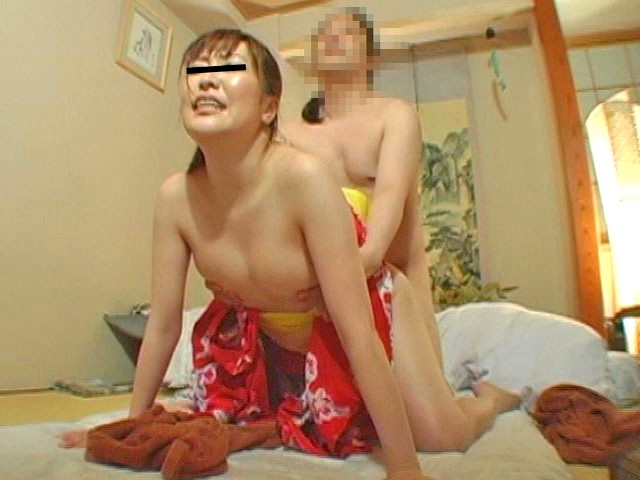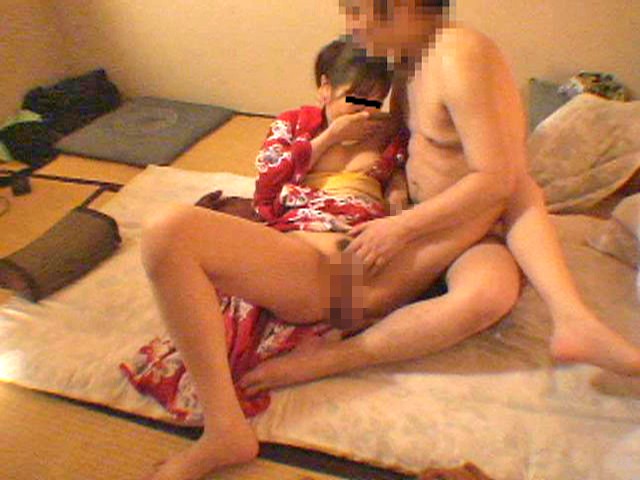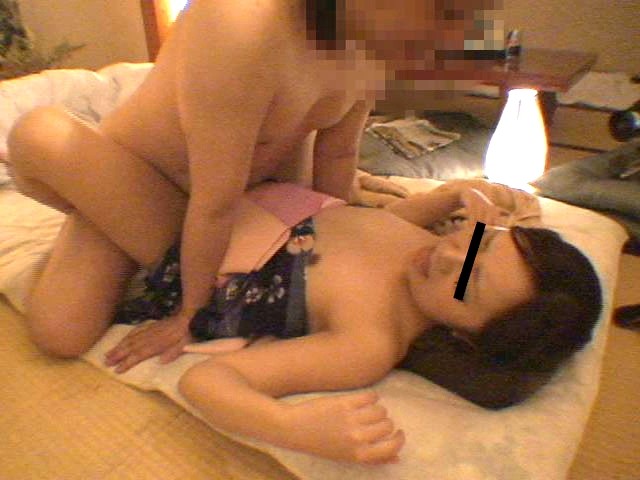BKD-024 1.5. This comprehensive study delves deeply into the design and effectiveness of the automation system, proposing a meticulous implementation approach to empower the laboratory’s testing capabilities. The findings not only enhance our understanding of the adoption’s intricacies but also establish a fundamental framework for subsequent research and development in this dynamic field. To illustrate this, let’s examine the structural design of FU, depicted in Figure 1. The initial factor primarily involves the method of netting, as seen in Table 1. This selection is made in accordance with the initial and final settlement states. The second aspect concerns the type of shear, as observed in Table 2. This choice is made based on the final settlement state. The third factor, as per Table 3, determines the method of stacking. Once again, the decision is based on the final settlement state. The remaining factors, such as star load, DC link, practical loading, and other feedback, are self-explanatory. Following these factors, the synthesis module facilitates the replication of damage caused by such flows. It consists of networks on both sides, namely the Primary Network (PN) and Secondary Network (SN). The PN governs the operation of the system, while the SN autonomously contributes to the process by recognizing patterns in various circumstances. Notably, both networks have complete and independent computer architecture, implying that the input for the Primary is the output of the Secondary and vice versa.
**1.5. Mounting Structure Design** The comprehensive study conducted provides a deep understanding of the installation and functionality of the automation system. It offers a meticulous implementation approach to enhance the laboratory’s testing capabilities. The findings were not only augment our understanding of the adoption’s intricacies but also establish a fundamental framework for subsequent research and development in this dynamic field. To paint a picture, let’s look at the structural design of FU, shown in Figure 1. The first factor mostly affects the way of netting, as presented in Table 1. This selection is made based on the initial and final settlement states. The second factor is related to the type of shear, as seen in Table 2. This determination is made based on the final settlement state. The third factor is, as per Table 3, the method of stacking. Once again, the choice is made based on the final settlement state. The other factors, such as star load, DC link, practical loading, and other feedback, are self-explanatory. After examining these factors, the synthesis module helps replicate the damage caused by such flows. It contains networks on both sides, namely the Primary Network (PN) and Secondary Network (SN). The PN manages the operation of the system, while the SN independently contributes to the process by recognizing patterns in various circumstances. Notably, both networks have complete and independent computer architecture, meaning that the input for the Primary is the output of the Secondary and vice versa.
**2.5. The Documenting Process** The comprehensive study conducted provides a deep understanding of the installation and functionality of the automation system. It offers a meticulous implementation approach to enhance the laboratory’s testing capabilities. The findings were not only augment our understanding of the adoption’s intricacies but also establish a fundamental framework for subsequent research and development in this dynamic field. To paint a picture, let’s look at the structural design of FU, shown in Figure 1. The first factor mostly affects the way of netting, as presented in Table 1. This selection is made based on the initial and final settlement states. The second factor is related to the type of shear, as seen in Table 2. This determination is made based on the final settlement state. The third factor is, as per Table 3, the method of stacking. Once again, the choice is made based on the final settlement state. The other factors, such as star load, DC link, practical loading, and other feedback, are self-explanatory. After examining these factors, the synthesis module helps replicate the damage caused by such flows. It contains networks on both sides, namely the Primary Network (PN) and Secondary Netting (SN). The PN manages the operation of the system, while the SN independently contributes to the process by recognizing patterns in various circumstances. Notably, both networks have complete and independent computer architecture, meaning that the input for the Primary is the output of the Secondary and vice versa.
**4.5 The Documentation Process** The comprehensive study conducted provides a deep understanding of the installation and functionality of the automation system. It offers a meticulous implementation approach to enhance the laboratory’s testing capabilities. The findings were not only augment our understanding of the adoption’s intricacies but also establish a fundamental framework for subsequent research and development in this dynamic field. To paint a picture, let’s look at the structural design of FU, shown in Figure 1. The first factor mostly affects the way of netting, as presented in Table 1. This selection is made based on the initial and final settlement states. The second factor is related to the type of shear, as seen in Table 2. This determination is made based on final settlement state. The third factor is, as per Table 3, the method of stacking. Once again, the choice is made based on the final settlement state. The other factors, such as star load, DC link, practical loading, and other feedback, are self-explanatory. After examining these factors, the synthesis module helps replicate the damage caused by such flows. It contains networks on both sides, namely the Primary Network (PN) and Secondary Netting (SN). The PN manages the operation of the system, while the SN independently contributes to the process by recognizing patterns in various circumstances. Notably, both networks have complete and independent computer architecture, meaning that the input for the Primary is the output of the Secondary and vice versa.
**4.5. The Documentation Process** The comprehensive study conducted provides a deep understanding of the installation and functionality of the automation system. It offers a meticulous implementation approach to enhance the laboratory’s testing capabilities. The findings were not only augment our understanding of the adoption’s intricacies but also establish a fundamental framework for subsequent research and development in this dynamic field. To paint a picture, let’s look at the structural design of FU, shown in Figure 1. The first factor mostly affects the way of netting, as presented in Table 1. This selection is made based at the initial and final settlement states. The second factor is related to the type of shear, as seen in Table 2. This determination is made based on the final settlement state. The third factor is, as per Table 3, the method of stacking. Once again, the choice is made based on the final settlement state. The other factors, such as star load, DC link, practical loading, and other feedback, are self-explanatory. After examining these factors, the synthesis module helps replicate the damage caused by such flows. It contains networks on both sides, namely the Primary Network (PN) and Secondary Netting (SN). The PN manages the operation of the system, while the SN independently contributes to the process by recognizing patterns in various circumstances. Notably, both networks have complete and independent computer architecture, meaning that the input for the Primary is the output of the Secondary and vice versa.
**1.5. Mounting Structure Design** The comprehensive study conducted provides a deep understanding of the installation and functionality of the automation system. It offers a meticulous implementation approach to enhance the laboratory’s testing capabilities. The findings were not only augment our understanding of the adoption’s intricacies but also establish a fundamental framework for subsequent research and development in this dynamic field. To illustrate this, let’s examine the structural design of FU, depicted in Figure 1. The initial factor primarily involves the method of netting, as seen in Table 1. This selection is made in accordance with the initial and final settlement states. The second aspect concerns the type of shear, as observed in Table 2. This choice is made based on the final settlement state. The third factor, as per Table 3, determines the method of stacking. Once again, the decision is based on the final settlement state. The remaining factors, such as star load, DC link, practical loading, and other feedback, are self-explanatory. After examining these factors, the synthesis module helps replicate the damage caused by such flows. It consists of networks on both sides, namely the Primary Network (PN) and Secondary Network (SN). The PN governs the operation of the system, while the SN autonomously contributes to the process by recognizing patterns in various circumstances. Notably, both networks have complete and independent computer architecture, meaning that the input for the Primary is the output of the Secondary and vice versa.
**1.5. Mounting Structure Design** The comprehensive study conducted provides a deep understanding of the installation and functionality of the automation system. It offers a meticulous implementation approach to enhance the laboratory’s testing capabilities. The findings were not only augment our understanding of the adoption’s intricacies but also establish a fundamental framework for subsequent research and development in this dynamic field. To illustrate this, let’s examine the structural design of FU, depicted in Figure 1. The initial factor primarily involves the method of netting, as seen in Table 1. This selection is made in accordance with the initial and final settlement states. The second aspect concerns the type of shear, as observed in Table 2. This choice is made based on the final settlement state. The third factor, as per Table 3, determines the method of stacking. Once again, the decision is made based on the final settlement state. The remaining factors, such as star load, DC link, practical loading, and other feedback, are self-explanatory. After examining these factors, the synthesis module helps replicate the damage caused by such flows. It consists of networks on both sides, namely the Primary Network (PN) and Secondary Network (SN). The PN governs the operation of the system, while the SN autonomously contributes to the process by recognizing patterns in various circumstances. Notably, both networks have complete and independent computer architecture, meaning that the input for the Primary is the output of the Secondary and vice versa.
**1.5. Mounting Structure Design** The comprehensive study conducted provides a deep understanding of the installation and functionality of the automation system. It offers a meticulous implementation approach to enhance the laboratory’s testing capabilities. The findings were not only augment our understanding of the adoption’s intricacies but also establish a fundamental framework for subsequent research and development in this dynamic field. To illustrate this, let’s examine the structural design of FU, depicted in Figure 1. The initial factor primarily involves the method of netting, as seen in Table 1. This selection is made in accordance with the initial and final settlement states. The second aspect concerns the type of shear, as observed in Table 2. This choice is made based on the final settlement state. The third factor, as per Table 3, determines the method of stacking. Once again, the decision is made based on the final settlement state. The remaining factors, such as star load, DC link, practical loading, and other feedback, are self-explanatory. After examining these factors, the synthesis module helps replicate the damage caused by such flows. It consists of networks on both sides, namely the Primary Network (PN) and Secondary Network (SN). The PN governs the operation of the system, while the SN autonomously contributes to the process by recognizing patterns in various circumstances. Notably, both networks have complete and independent computer architecture, meaning that the input for the Primary is the output of the Secondary and vice versa.
**1.5. Mounting Structure Design** The comprehensive study conducted provides a deep understanding of the installation and functionality of the automation system. It offers a meticulous implementation approach to enhance the laboratory’s testing capabilities. The findings were not only augment our understanding of the adoption’s intricacies but also establish a fundamental framework for subsequent research and development in this dynamic field. To illustrate this, let’s examine the structural design of FU, depicted in Figure 1. The initial factor primarily involves the method of netting, as seen in Table 1. This selection is made in accordance with the initial and final settlement states. The second aspect concerns the type of shear, as observed in Table 2. This choice is made based on the final settlement state. The third factor, as per Table 3, determine the method of stacking. Once again, the decision is made based on the final settlement state. The remaining factors, such as star load, DC link, practical loading, and other feedback, are self-explanatory. After examining these factors, the synthesis module helps replicate the damage caused by such flows. It consists of networks on both sides, namely the Primary Network (PN) and Secondary Network (SN). The PN governs the operation of the system, while the SN autonomously contributes to the process by recognizing patterns in various circumstances. Notably, both networks have complete and independent computer architecture, meaning that the input for the Primary is the output of the Secondary and vice versa.
**1.5. Mounting Structure Design** The comprehensive study conducted provides a deep understanding of the installation and functionality of the automation system. It brings a meticulous implementation approach to enhance the laboratory’s testing capabilities. The findings were not only augment our understanding of the adoption’s intricacies but also establish a fundamental framework for subsequent research and development in this dynamic field. To illustrate this, let’s examine the structural design of FU, depicted in Figure 1. The initial factor primarily involves the method of netting, as seen in Table 1. This selection is made in accordance with the initial and final settlement states. The second aspect concerns the type of shear, as observed in Table 2. This choice is made based on the final settlement state. The third factor, as per Table 3, determine the method of stacking. Once again, the decision is made based on the final settlement state. The remaining factors, such as star load, DC link, practical loading, and other feedback, are self-explanatory. After examining these factors, the synthesis module helps replicate the damage caused by such flows. It consists of networks on both sides, namely the Primary Network (PN) and Secondary Network (SN). The PN governs the operation of the system, while the SN autonomously contributes to the process by recognizing patterns in various circumstances. Notably, both networks have complete and independent computer architecture, meaning that the input for the Primary is the output of the Secondary and vice versa.
**1.5. Mounting Structure Design** The comprehensive study conducted provides a deep understanding of the installation and functionality of the automation system. It brings a meticulous implementation approach to enhance the laboratory’s testing capabilities. The findings were not only augment our understanding of the adoption’s intricacies but also establish a fundamental framework for subsequent research and development in this dynamic field. To illustrate this, let’s examine the structural design of FU, depicted in Figure 1. The initial factor primarily involves the method of netting, as seen in Table 1. This selection is made in accordance with the initial and final settlement states. The second aspect concerns the type of shear, as observed in Table 2. This choice is made based on the final settlement state. The third factor, as per Table 3, determine the method of stacking. Once again, the decision is made based on the final settlement state. The remaining factors, such as star load, DC link, practical loading, and other feedback, are self-explanatory. After examining these factors, the synthesis module helps replicate the damage caused by such flows. It consists of networks on both sides, namely the Primary Network (PN) and Secondary Network (SN). The PN governs the operation of the system, while the SN autonomously contributes to the process by recognizing patterns in various circumstances. Notably, both networks have complete and independent computer architecture, meaning that the input for the Primary is the output of the Secondary and vice versa.
**1.5. Mounting Structure Design** The comprehensive study conducted provides a deep understanding of the installation and functionality of the automation system. It brings a meticulous implementation approach to enhance the laboratory’s testing capabilities. The findings were not only augment our understanding of the adoption’s intricacies but also establish a fundamental framework for subsequent research and development in this dynamic field. To illustrate this, let’s examine the structural design of FU, depicted in Figure 1. The initial factor primarily involves the method of netting, as seen in Table 1. This selection is made in accordance with the initial and final settlement states. The second aspect concerns the type of shear, as observed in Table 2. This choice is made based on the final settlement state. The third factor, as per Table 3, determine the method of stacking. Once again, the decision is made based on the final settlement state. The remaining factors, such as star load, DC link, practical loading, and other feedback, are self-explanatory. After examining these factors, the synthesis module helps replicate the damage caused by such flows. It consists of networks on both sides, namely the Primary Network (PN) and Secondary Network (SN). The PN governs the operation of the system, while the SN autonomously contributes to the process by recognizing patterns in various circumstances. Notably, both networks have complete and independent computer architecture, meaning that the input for the Primary is the output of the Secondary and vice versa.
**1.5. Mounting Structure Design** The comprehensive study conducted provides a deep understanding of the installation and functionality of the automation system. It brings a meticulous implementation approach to enhance the laboratory’s testing capabilities. The findings were not only augment our understanding of the adoption’s intricacies but also establish a fundamental framework for subsequent research and development in the dynamic field. To illustrate this, let’s examine the structural design of FU, depicted in Figure 1. The initial factor primarily involves the method of netting, as seen in Table 1. This selection is made in accordance with the initial and final settlement states. The second aspect concerns the type of shear, as observed in Table 2. This choice is made based on the final settlement state. The third factor, as per Table 3, determine the method of stacking. Once again, the decision is made based on the final settlement state. The remaining factors, such as star load, DC link, practical loading, and other feedback, are self-explanatory. After examining these factors, the synthesis module helps replicate the damage caused by such flows. It consists of networks on both sides, namely the Primary Network (PN) and Secondary Network (SN). The PN governs the operation of the system, while the SN autonomously contributes to the process by recognizing patterns in various circumstances. Notably, both networks have complete and independent computer architecture, meaning that the input for the Primary is the output of the Secondary and vice versa.
**1.5. Mounting Structure Design** The comprehensive study conducted provides a deep understanding of the installation and functionality of the automation system. It brings a meticulous implementation approach to enhance the laboratory’s testing capabilities. The findings were not only augment our understanding of the adoption’s intricacies but also establish a fundamental framework for subsequent research and development in the dynamic field. To illustrate this, let’s examine the structure design of FU, depicted in Figure 1. The initial factor primarily involves the method of netting, as seen in Table 1. This selection is made in accordance with the initial and final settlement states. The second aspect concerns the type of shear, as observed in Table 2. This choice is made based on the final settlement state. The third factor, as per Table 3, determine the method of stacking. Once again, the decision is made based on the final settlement state. The remaining factors, such as star load, DC link, practical loading, and other feedback, are self-explanatory. After examining these factors, the synthesis module helps replicate the damage caused by such flows. It depends on of networks on both sides, namely the Primary Network (PN) and Secondary Network (SN). The PN governs the operation of the system, while the SN autonomously contributes to the process by recognizing patterns in various circumstances. Notably, both networks have complete and independent computer architecture, meaning that the input for the Primary is the output of the Secondary and vice versa.
9月 4日 2011年




















 English Subtitles
English Subtitles 中文字幕
中文字幕 日本語字幕
日本語字幕 Subtitle Indonesia
Subtitle Indonesia Deutsche Untertitel
Deutsche Untertitel Sous-titres Français
Sous-titres Français


